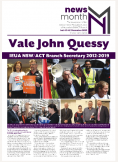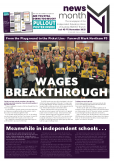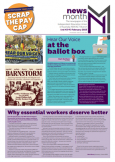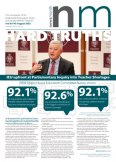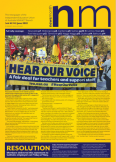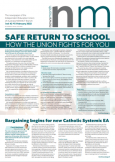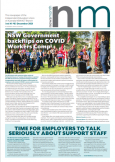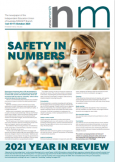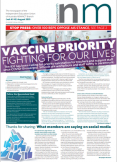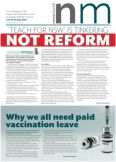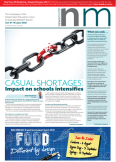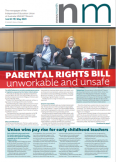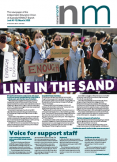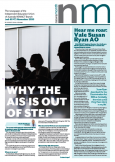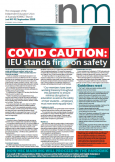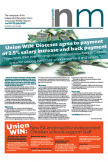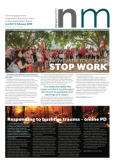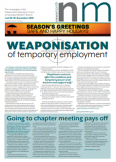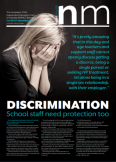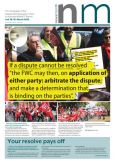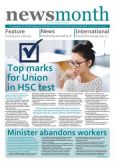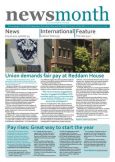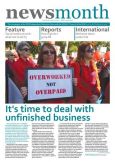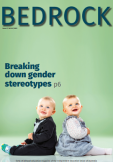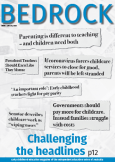
Workplace bullying is a serious and dangerous hazard with the potential to end the productive working lives of those who are affected, Health and Safety Officer Brian Martin writes.
This article discusses the hazard from an organisational perspective and suggests how union members can act collectively to combat not only the bully but the bullying culture.
What is workplace bullying?
The Fair Work Act 2009 states that workplace bullying is
“repeated and unreasonable behaviour directed towards a worker or a group of workers that creates a risk to health and safety”.
In its 2016 Psychological Health and Safety and Bullying in Australian Workplaces Report, Safe Work Australia reports that the percentage of accepted claims citing bullying and/or harassment as the reason for the mental stress accounted for 29% of the total. The rate of claims made by females was almost triple the claims made by males. The report excludes data from Victoria but WorkSafe Victoria data shows a similar pattern. The typical claim payment amounted to $22,600, with the injured person being typically absent from work for a period of nine weeks. School education as an industry ranked eighth highest in terms of claims frequency rates, while secondary school teachers ranked ninth highest among occupational groups nationally.
Bullying, harassment and discrimination are terms often used together without workers and workplace leaders being fully cognisant of the important differences between them. While each may occur in a workplace concurrently, bullying, harassment and discrimination are different terms and it is important to be aware of the subtle differences between them. It is not the intention of this article to discuss harassment and discrimination in any detail other than to make the reader aware that using the terms together in policy or procedure may actually diminish the effectiveness of any prevention effort.
Repeated and unreasonable
The nationally accepted definition of workplace bullying contained within the Fair Work Act means that for behaviours to be considered bullying they must pass the test of being unreasonable, repeated and result in – or have the potential to cause – harm to another. Harassment, unlike bullying, does not have to be repeated behaviour. However, it is behaviour that intimidates, offends or humiliates and targets an attribute or characteristic of another person. Likewise, discrimination occurs on the basis of one or more personal attributes such as gender, age or disability being targeted.
According to the report
Bullying and Harassment in Australian Workplaces: Results from the Australian Workplace Barometer 2014-15 states the reasons for bullying behaviour can include:
• a lack of managerial regard for workplace psychological health and safety
• an attempt to force greater productivity from workers
• attempting to maintain personal power within the organisation, and
• poor quality task and job design.
The report also found that superiors are most commonly considered the source of bullying. In schools of course that means middle and senior levels of management. It has been long accepted that differential levels of actual and perceived power in the workplace are a factor in why bullying occurs.
Strategies to combat bullying
What then are the strategies available to workers to respond to and prevent workplace bullying? How does a worker employed for 20 years in a school respond to bullying behaviour from a superior, particularly when the superior is the principal?
The seeking of anti bullying orders against a principal in the Fair Work Commission, as was the case in Purcell v Farah and Mercy Education Ltd (2016), is one option. However in seeking this remedy there may be jurisdictional barriers, not to mention the emotional demands of preparing the case and being subjected to cross examination during the hearing. While anti bullying orders may be granted by the Commission there remains the existence of the underlying workplace culture which gave ‘permission’ for the behaviour to occur in the first place. Seeking anti bullying orders may provide some welcome relief, but it very likely will not result in cultural change.
Changing the culture
In many similar working environments where ‘permission’ is given by leadership for bullying to flourish and continue unabated, where the organisational culture is neither healthy nor safe, staff often reassess their commitment to continue to work there. The decision to leave and find employment elsewhere is commonly the path to resolve being bullied.
On the matter of workplace culture, the Australian Workplace Barometer report noted that “to mitigate the deleterious impact of bullying and harassment there must be a solid commitment from senior management to prioritise and communicate good work health and safety policies, practices and procedures”. The report makes clear that such commitment is made more visible when “strategies to address workplace bullying emphasise organisational level prevention through monitoring and modifying the risk factors in the organisational system”. To subvert the dominant bullying culture of a workplace where the leaders themselves are the bullies requires a sustained collective effort of union members.
Addressing the bullying behaviours of a member of the school’s senior leadership, such as the principal, takes courage, commitment, solidarity and guts, and it doesn’t resolve quickly. Changing a toxic workplace culture may take between two and five years and requires the union sub branch to work closely with their union organiser, recruit new members to the cause and not give up until the bullying stops or the perpetrator is disciplined or removed, and the dominant cultural paradigm of the workplace shifts to a culture of continual improvement and prevention.
Throughout such a quest to improve the workplace, it is essential that members do not neglect their own and colleagues’ health, safety and overall wellbeing and that ways to support each other are identified and acted upon.
The election of a WHS Rep by staff is crucial. Union sub branches can also carry out a number of steps, including collecting the relevant data, analysing the data to identify key preventative strategies and planning how they can achieve each strategic goal.
Underlying effective strategies is a collective approach.
Brian Martin is the Health and Safety Officer for IEU Victoria Tasmania Branch.


